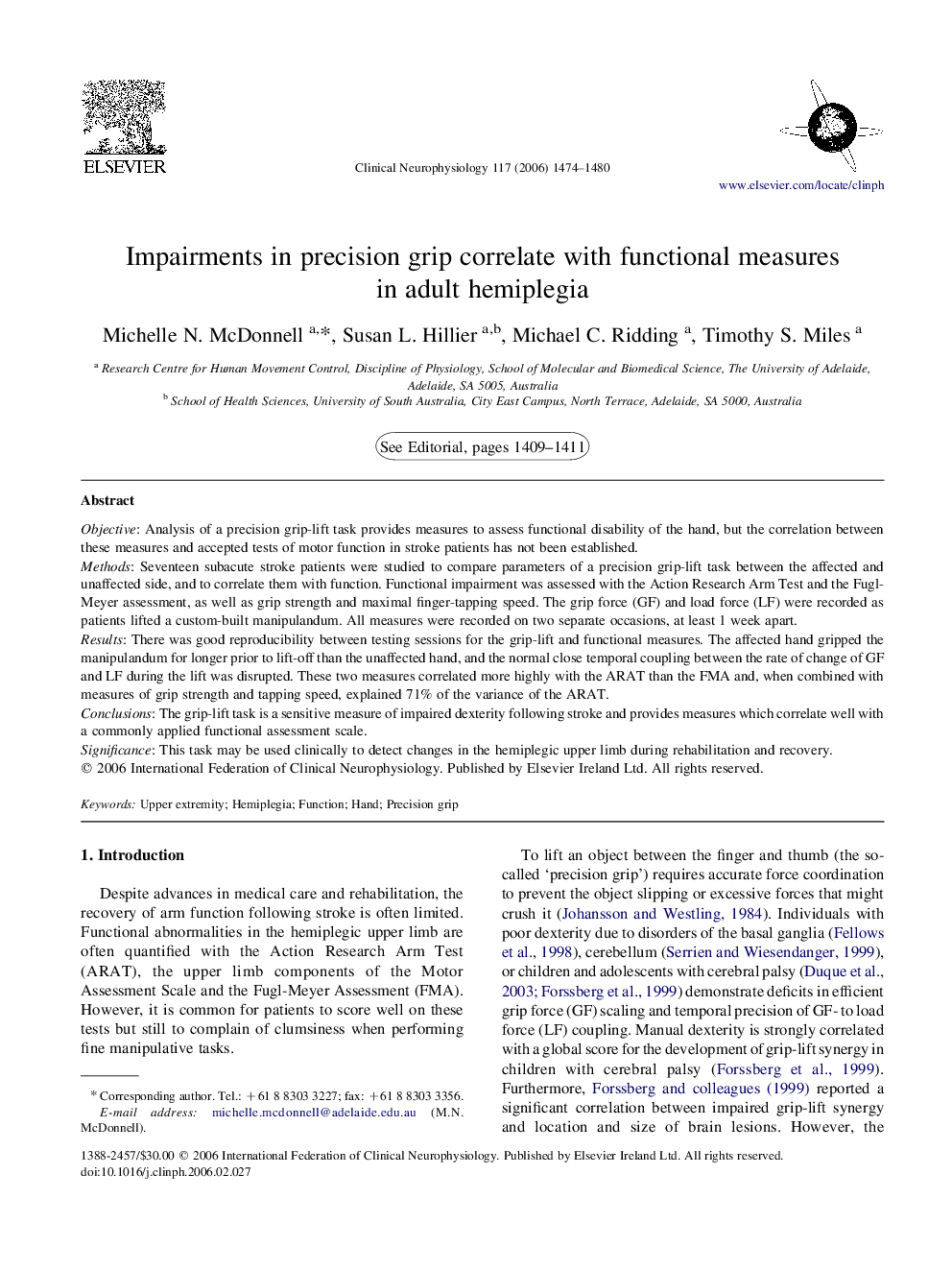| Article ID | Journal | Published Year | Pages | File Type |
|---|---|---|---|---|
| 3048102 | Clinical Neurophysiology | 2006 | 7 Pages |
ObjectiveAnalysis of a precision grip-lift task provides measures to assess functional disability of the hand, but the correlation between these measures and accepted tests of motor function in stroke patients has not been established.MethodsSeventeen subacute stroke patients were studied to compare parameters of a precision grip-lift task between the affected and unaffected side, and to correlate them with function. Functional impairment was assessed with the Action Research Arm Test and the Fugl-Meyer assessment, as well as grip strength and maximal finger-tapping speed. The grip force (GF) and load force (LF) were recorded as patients lifted a custom-built manipulandum. All measures were recorded on two separate occasions, at least 1 week apart.ResultsThere was good reproducibility between testing sessions for the grip-lift and functional measures. The affected hand gripped the manipulandum for longer prior to lift-off than the unaffected hand, and the normal close temporal coupling between the rate of change of GF and LF during the lift was disrupted. These two measures correlated more highly with the ARAT than the FMA and, when combined with measures of grip strength and tapping speed, explained 71% of the variance of the ARAT.ConclusionsThe grip-lift task is a sensitive measure of impaired dexterity following stroke and provides measures which correlate well with a commonly applied functional assessment scale.SignificanceThis task may be used clinically to detect changes in the hemiplegic upper limb during rehabilitation and recovery.
